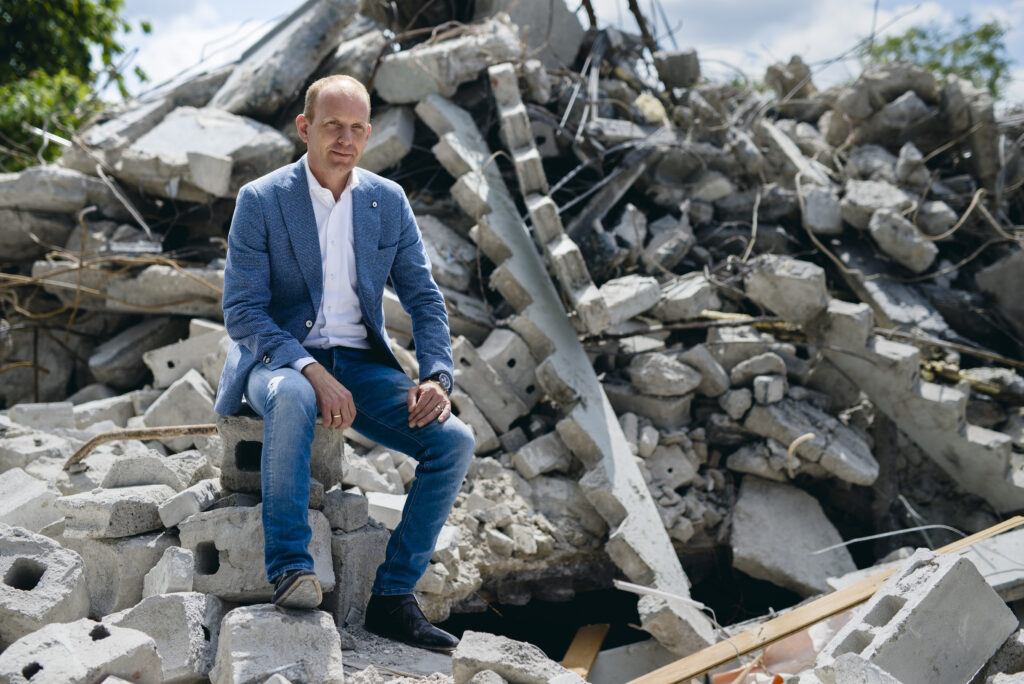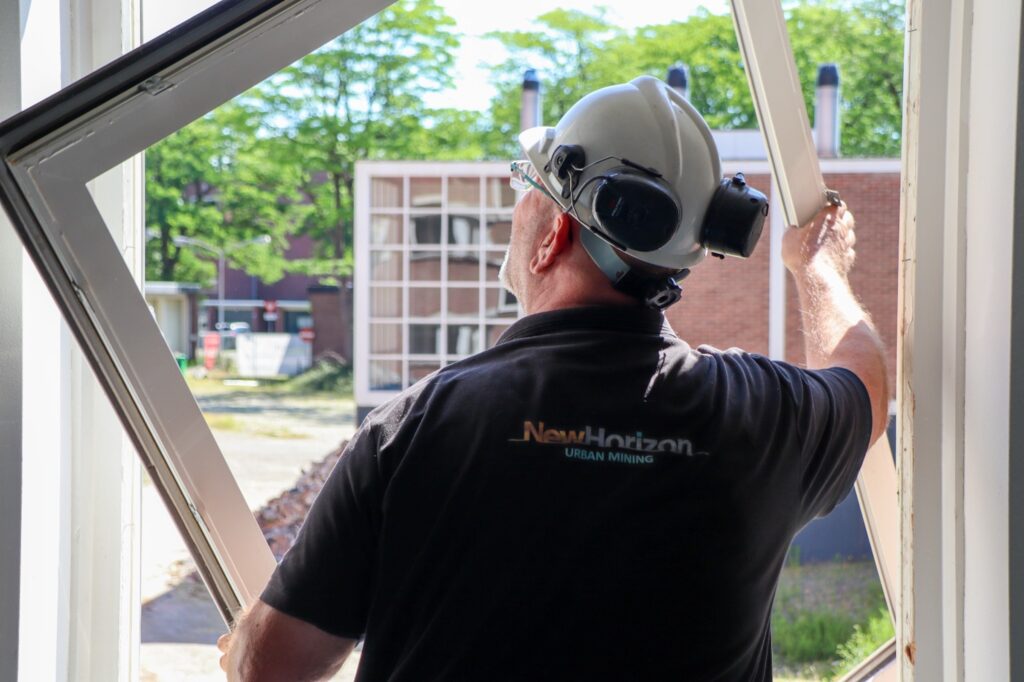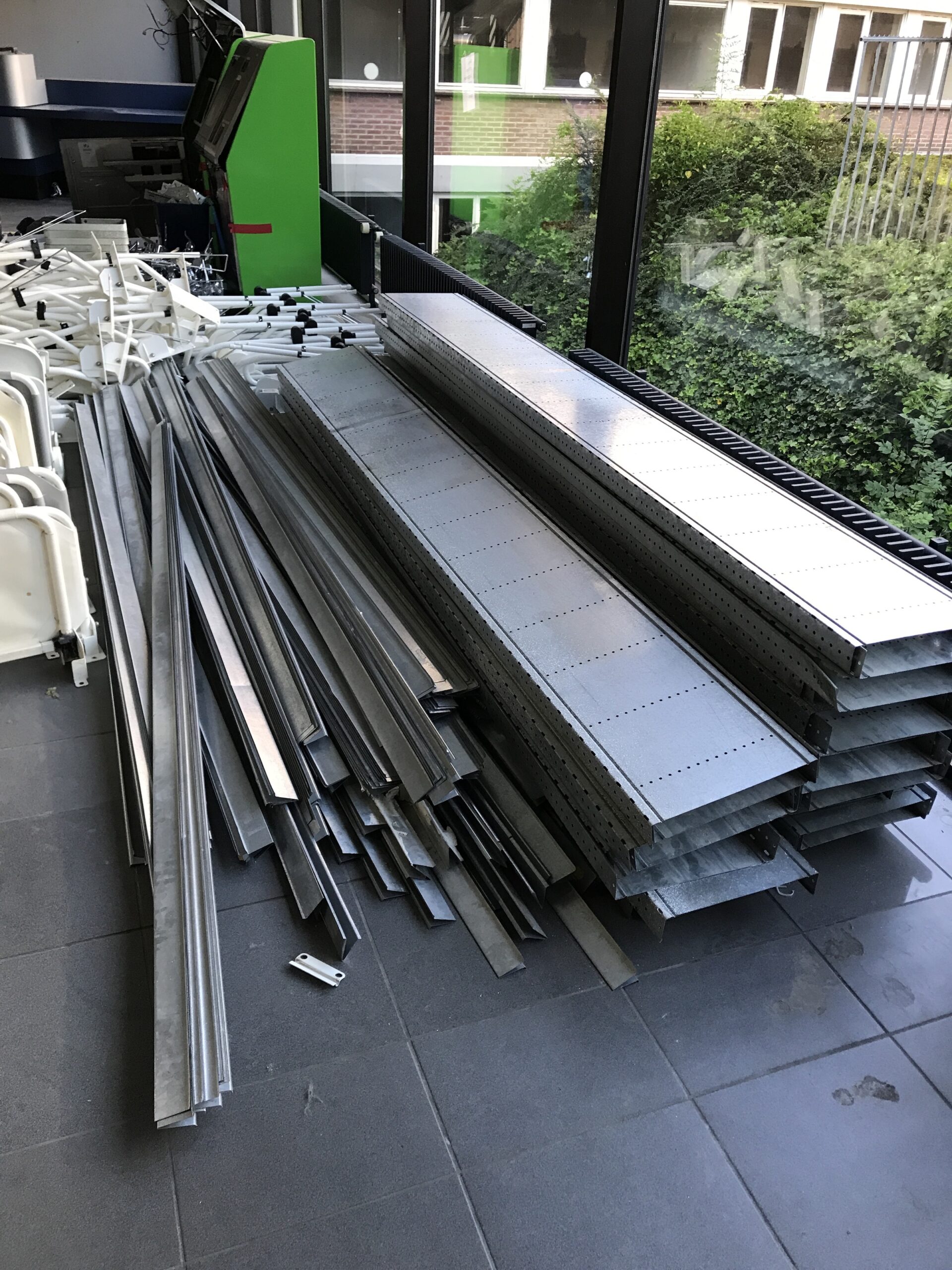New Horizon Urban Mining is a demolition firm in Amsterdam that specializes in the practice of deconstructing buildings and infrastructure and selling the building products and components for reuse in new construction.
Nearly half of the waste in the Netherlands comes from construction and demolition, yet only a minuscule portion of that waste—around 4%—is reused for residential or nonresidential building. The country, though, has set an ambitious goal to be waste-free by 2050, and Amsterdam itself plans to be building 20% of its new housing with wood and bio-based materials by 2025, and reducing by half its use of raw materials by 2030, according to the New York Times.
 Michel Baars, who founded New Horizon in 2015, says he introduced the so-called cradle-to-cradle circularity model to the Dutch real estate industry when he co-owned an engineering/inspection consulting firm that was a leader in surveying and management for demolition projects. After selling that company, he recalls, “I realized I wanted to make more of an impact.” He launched New Horizon as a “risk-bearing” company for the demolition of buildings, as well as the production and distribution of building materials from “urban mining.”
Michel Baars, who founded New Horizon in 2015, says he introduced the so-called cradle-to-cradle circularity model to the Dutch real estate industry when he co-owned an engineering/inspection consulting firm that was a leader in surveying and management for demolition projects. After selling that company, he recalls, “I realized I wanted to make more of an impact.” He launched New Horizon as a “risk-bearing” company for the demolition of buildings, as well as the production and distribution of building materials from “urban mining.”
His 23-employee company generates 15 million Euros (US$15.8 million) in annual revenue. On average, New Horizon demolishes 500 houses and 200,000 square meters of commercial buildings such as offices and hospitals per year. New Horizon’s clientele for recycled materials are building owners and developers.
To keep the supply pipeline flowing, Baars says New Horizon offers discounts on the cost of demolition to clients that agree to purchase recycled building products from his company and donate their demo waste to New Horizon. Baars adds, parenthetically, that rarely are clients purchasing the same materials that come from their own demo projects. “We exchange between projects and clients,” he says.
Baars doesn’t believe in owning warehouse space, so he’s worked out deals with big producers and distributors to store New Horizon’s building materials from urban mining in the same warehouses that these companies stock their own products. As the percentage of urban-mined materials becomes larger, New Horizon can more comfortably guarantee full deliveries to contractors, and even offer what Baars calls “hybrid” deliveries that combined urban-mined and newly produced materials.
An important part of this process, Baars explains, is an analysis of the buildings it plans to demolish so that New Horizon can predict its materials yield. That effort is “much easier,” Baars adds, when the building being demolished had been constructed using prefabricated components.
 Baars is convinced that circularity will make recycled building products more attractive to clients in the future because new production will be more expensive due to carbon taxes. For example, extracting and reusing gypsum from a building’s plaster significantly reduces a project’s carbon footprint because it cuts down on the amount of new gypsum that needs to be manufactured. (Baars says his method of recovery doesn’t crush the plasterboard, so it can be reused in new construction or renovation as wall systems without releasing embodied carbon.)
Baars is convinced that circularity will make recycled building products more attractive to clients in the future because new production will be more expensive due to carbon taxes. For example, extracting and reusing gypsum from a building’s plaster significantly reduces a project’s carbon footprint because it cuts down on the amount of new gypsum that needs to be manufactured. (Baars says his method of recovery doesn’t crush the plasterboard, so it can be reused in new construction or renovation as wall systems without releasing embodied carbon.)
New Horizon also avoids most CO2 emissions associated with concrete production by reducing chunks of old concrete to a mix that can be separated into cement dust, sand, or gravel. The machines that do this are powered by solar energy, and New Horizon markets the byproduct as climate-neutral.
The company provides 150,000 cubic meters of concrete to the Netherlands’ building industry, and 250,000 tons of other materials that include sand and stone. In the coming years, Baars sees growth for New Horizon Urban Mining coming from its concrete upcycling activities.
“The impact of this materials loop, including the upcycling of ceramic materials, is big enough to make our demolition proposition highly competitive,” he says. And the bigger the scale of his demolition business, the greater the possibilities for urban mining and recycling opportunities in other materials.
You can read the original post at www.bdcnetwork.com

